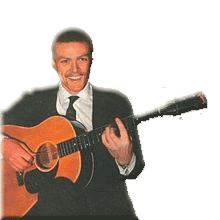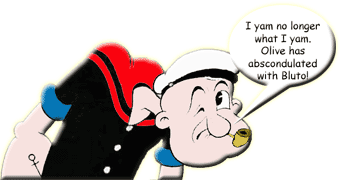
Bob Leslie is an Independent Scottish Songwriter, Singer, and Recording Artist
Song of a sad sailor …
Sally, Free and Easy was written by then sailor, Cyril Tawney,  in 1958. When he was serving in Gibraltar during WWII, he was in the submarine service and he had rather an unfortunate affair with a girl, who two-timed him; her name was Sally.
in 1958. When he was serving in Gibraltar during WWII, he was in the submarine service and he had rather an unfortunate affair with a girl, who two-timed him; her name was Sally.
That incident came to mind when he was messing around with the idea of writing an English-based 12-bar blues, and Sally, Free and Easy was the result.
The song laments the lady’s infidelity, the loss of her love, the sailor’s vow to die at sea, and, finally, a wish that she “die of shame” for her conduct.
Although the song doesn’t follow a blues chord structure, it does follow a kind of double blues lyrical shape – over 24 rather than 12 bars, with the first two lines repeated, then a chord, melody, and lyric change in the last two lines.
Tawney sang it very much as a blues “holler” – very loud, raw, and direct – check this out.
 Fortunately for us listeners, the song was recorded in 1964 by innovative guitarist and singer Davey Graham (composer of Angie – the tune most acoustic guitarists of my generation graduated to when they got tired of just strumming).
Fortunately for us listeners, the song was recorded in 1964 by innovative guitarist and singer Davey Graham (composer of Angie – the tune most acoustic guitarists of my generation graduated to when they got tired of just strumming).
Graham gave the song a moody, introspective, and much more laid-back arrangement, and added a few vocal decorations to the melody.
The Davey Graham version caught on and has informed the many subsequent covers of the song.
Cyril Tawney himself gave full credit to Davey Graham for popularising Sally, Free and Easy.
……………………………………………………………..
Lend an ear and an eye …
 Sally, Free and Easy
Sally, Free and Easy
© 1958 Cyril Tawney, performance © 1965 Davey Graham

……………………………………………………………..
Beat it … 
This is a very tightly structured song. In the original, there are three stresses/line throughout, and every metric foot is a trochee (DUM-dah) – although some have the final -dah given as a beat in the accompaniment rather than in the lyric.
- Sal-ly, | free and | ea-sy, | That should | be her | name …
In Davey Graham’s version, his vocal decorations (e.g. stretching “free” into 3 syllables that run into “and”) have that pattern in the two repeated lines change to
- 1 x trochee, 1 x dactyl (DUM-dah-dah), 1 x trochee
- Sal-ly | free-ee-eeand | ea-sy (with the “ee” running into the “and” as a diphthong)
In both cases, the structure is maintained throughout.
……………………………………………………………..
Rhyme Time …
The end-rhymes in every verse follow the pattern
- A B A B C B
- “easy, name” “easy, name” “loving, game”
……………………………………………………………..
In the mode …
Although the song is arranged over 24 bars of 4/4, and it follows the blues pattern of two parts the same, one part different, it doesn’t follow a typical blues pattern of using chords I, IV, and V of either a major or minor scale. 
Instead, it is pitched in C mixolydian mode:
- C D E F G A Bb
The chords used are
- I – C major
- IV – F major
- V – G minor
- VII – Bb
Mixolydian is almost as common in British and North American non-blues folk music as major or minor keys, so that gives this trad/blues hybrid its folky overtones – although these are more apparent in the Davey Graham version as Tawney does give the song a more aggressively bluesy vocal approach.
……………………………………………………………..
The verdict? …
The modal format, and the gentler delivery of versions following the Davey Graham model, place the song as a natural member of a family of folk melodies that include She Moved Through the Fair and The Silkie. Like them, it’s become a folk standard.
The theme of infidelity, lost love, and anger is also a common one in the traditional world, so the song has had no difficulty inveigling itself into many an established traditional artist’s repertoire – the Corries, Pentangle, Alan Stivell, Carloyn Hester, John Boden, et al. have recorded it.

I find it’s a great song for playing around with alternative guitar tunings – I’ve done it in Dropped D and Open G minor tunings, and I imagine it’s a natural for DADGAD as well.
I’ll call it a hit!
……………………………………………………………..
Next time, we’ll ruthlessly eviscerate another of my own dainty ditties!
……………………………………………………………..
Click here to return to Home page
Bob Leslie – Scottish – Traditional – Songwriter


Extremely interesting article and analysis of this song , which I have known first recorde by Alan Stivell on his first LP. Doris Anderson and John Renbourne alos coverd this song.
LikeLike
Thanks, Henri! I’d overlooked Alan Stivell covering this, I’ll check it out.
LikeLike